Second International Workshop
on Requirements Engineering Visualization (REV’07)
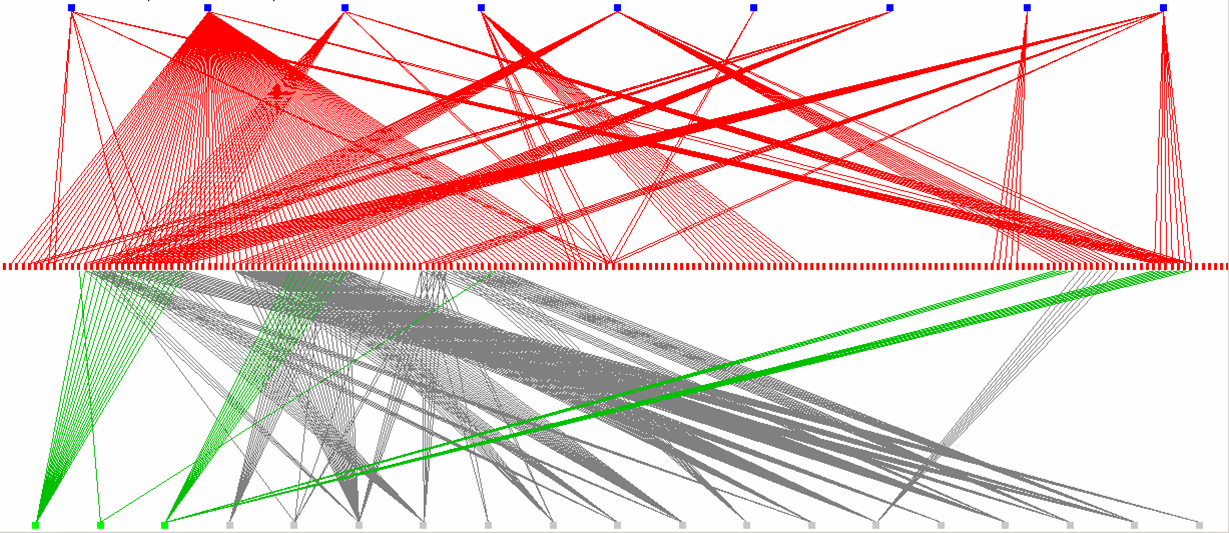
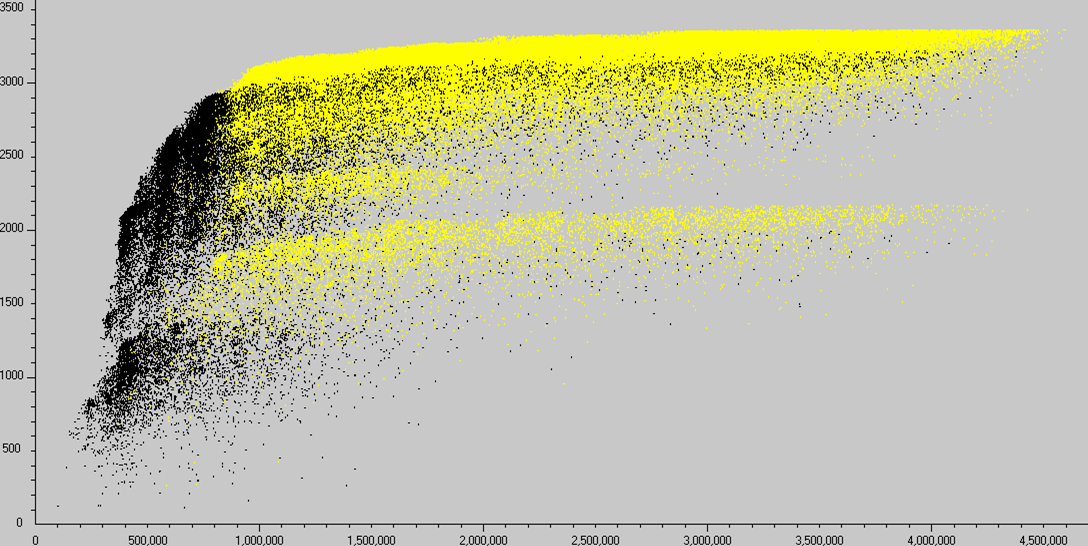

Left and center visualizations
by: Martin S. Feather (California Institute of Technology), Steven L.
Cornford (California Institute of Technology), James D. Kiper (Miami University)
and Tim Menzies (West Virginia University), from “Experiences using
Visualization Techniques to Present Requirements, Risks to Them and Options
for Risk Mitigation” in Proceedings of REV’06 (with kind permission).
Right visualization
by: Neil A. Ernst, Yijun Yu and John Mylopoulos (University of Toronto),
from “Visualizing Non-Functional Requirements” in Proceedings
of REV’06 (with kind permission).
|
|
Held in conjunction with The 15th IEEE International
Requirements Engineering Conference (RE'07)
October 15-19th, 2007, New
Delhi, India
Quick links to...
Published papers
Program
Posters and Slides
Themes
Topics
Goals
Targeted Attendees
Workshop Format and Duration
Submission Types
Important Dates
Program Committee
Workshop Co-Chairs
Check out the images on this page to see some of the wonderful contributions from last year's papers (REV'06). Click on the images to see larger versions.
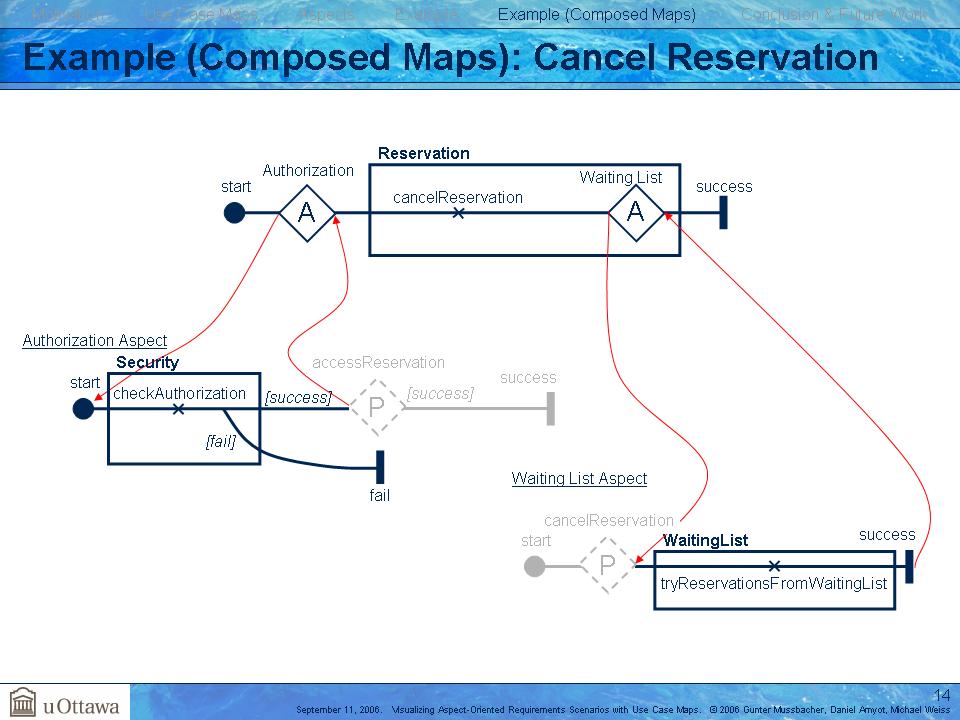
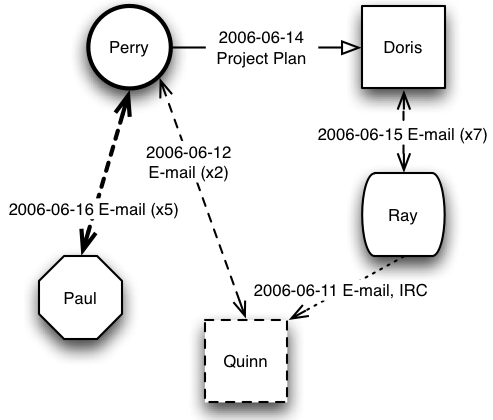
Left visualization by: Gunter Mussbacher (University of Ottawa), Daniel Amyot (University of Ottawa) and Michael Weiss (Carleton University), from “Visualizing Aspect-Oriented Requirements Scenarios With Use Case Maps” in Proceedings of REV’06 (with kind permission); right visualization by: Irwin Kwan, Daniela Damian and Margaret-Anne Storey (University of Victoria), from “Visualizing Requirements-Centered Social Network to Maintain Awareness within Development Teams” in Proceedings of REV’06 (with kind permission).
Program
Monday October 15th, 2007
Habitat Centre
09:00 – 09:30 Welcome to REV and Program Overview -- Brian Berenbach
09:30 – 10:30 Session 1: Visualizing Goals
- Gunter Mussbacher, Daniel Amyot, Joao Araujo, Ana Moreira and Michael Weiss -- Visualizing Aspect-Oriented Goal Models with AoGRL (Full Paper -- 25 minutes)
- A.M. Sen and S.K. Jain -- A Visualization Technique for Agent Based Goal Refinement to Elicit Soft Goals in Goal Oriented Requirements Engineering (Full Paper – 25 minutes)
- Open Discussion on Presenters’ Visualization Posters (10 minutes)
10:30 – 11:00 Coffee/Tea Break
11:00 – 12:30 Session 2: Visualizing Relationships and Dynamics
- Pete Sawyer, Nelly Bencomo, Danny Hughes, Paul Grace, Heather J. Goldsby and Betty H.C. Cheng -- Visualizing the Analysis of Dynamically Adaptive Systems Using i* and DSLs* (Full Paper -- 25 minutes)
- Jane Cleland-Huang and Rafal Habrat -- Visual Support in Automated Tracing (Position Paper – 15 minutes)
- Keitaro Osawa and Atsushi Ohnishi -- Scenario Map for Visualizing Classified Scenarios (Full Paper – 25 minutes)
- Robin A. Gandhi and Seok-Won Lee -- Visual Analytics for Requirements-driven Risk Assessment (Position Paper – 15 minutes)
- Open Discussion on Presenters’ Visualization Posters (10 minutes)
12:30 – 14:00 Lunch
14:00 – 15:30 Session 3: Visualizing Product Lines and Models
- David Sellier and Mike Mannion -- Visualising Product Line Requirement Selection Decision Inter-dependencies (Full Paper – 25 minutes)
- Reinhard Stoiber, Silvio Meier and Martin Glinz -- Visualizing Product Line Domain Variability by Aspect-oriented Modeling (Position Paper – 15 minutes)
- Tobias Reinhard, Silvio Meier and Martin Glinz -- An Improved Fisheye Zoom Algorithm for Visualizing and Editing Hierarchical Models (Full Paper – 25 minutes)
- Joy Beatty and Mike Alexander -- Display-Action-Response Model for User Interface Requirements - A Case Study (Position Paper – 15 minutes)
- Open Discussion on Presenters’ Visualization Posters (10 minutes)
15:30 – 16:00 Coffee/Tea Break
16:00 – 16:50 Session 4: Visualization Visions in Requirements Engineering
- Orlena C.Z. Gotel, Francis T. Marchese and Stephen J. Morris – On Requirements Visualization (Full Paper – 25 minutes)
- Open Discussion on Presenter’s Visualization Poster and Guided Brainstorming/Future-Gazing Session (25 minutes)
16:50 – 17:00 REV Wrap-up and Closing Comments -- Brian Berenbach
Posters and Slides
Download zip file of all visualization posters here.
Download zip file of all presentation slides (one per page or six per page).
Visualization tool list (in progress).
Papers are published and available through the IEEE here.
Themes
With the increasing complexity
of software requirements, problems of traditional requirements engineering techniques,
including the use of unstructured text and lists, are becoming increasingly
apparent. Allowing a large amount of unstructured textual information with redundancy,
these approaches typically suffer in understandability, scalability and analysis.
Visualization techniques have long been used to overcome these problems in other
fields. In the field of education, diagrams are regularly used to aid learning.
In various classical engineering disciplines, visualization is used heavily
in modeling and simulation. While software engineering has begun to follow in
the footsteps of these disciplines with the emergence of model-based development
techniques, visualization has largely been at the design level. This workshop
aims to explore visualization techniques in the context of requirements engineering.
There are many potential use cases of visualization. Visualization
may improve understanding of requirements by showing the overview, providing
navigation facilities for incremental exploration, and by conveying a rich set
of information through concise and intuitive syntax. Visualization may also
allow the same set of information to be viewed in different perspectives by
customizing concepts and relationships according to stakeholder interests. This
could promote collaborative development, and support the negotiation and prioritization
of requirements, leading to a scalable methodology. Visualization may also facilitate
analysis of structured requirements, for example, by providing incremental guidance
in formal verification. Visualization, as an intuitive practice, may facilitate
requirements elicitation and analysis in many other innovative ways.
However, while innovation is admirable, practicality is
almost always a necessity. While visualization techniques may be innovative,
they have to be practical, like the traditional requirements engineering techniques,
in order to be accepted. The fact that the software industry largely uses traditional
requirements elicitation and analysis techniques suggests that practicality
is a trait hard to achieve. Thus the workshop will also examine the practicality
of visualization techniques.
Topics
Topics of interest include experience papers, formal methods,
emerging technologies, best practices, research proposals, evaluations and comparisons
that focus on visualization techniques for requirements engineering activities.
Typical topics of interest include, but are certainly not limited to:
- Visualization languages/techniques for requirements
elicitation/analysis/specification
- Visualization languages/techniques for formal verification/validation
of requirements
- Visualization languages/techniques to facilitate the
management/evolution of requirements
- Visualization support for existing requirements engineering
techniques
- Heuristics and metrics for visualization techniques
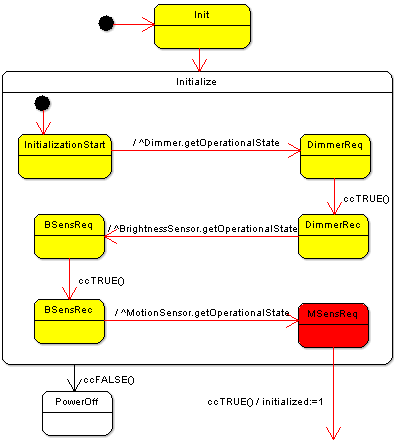
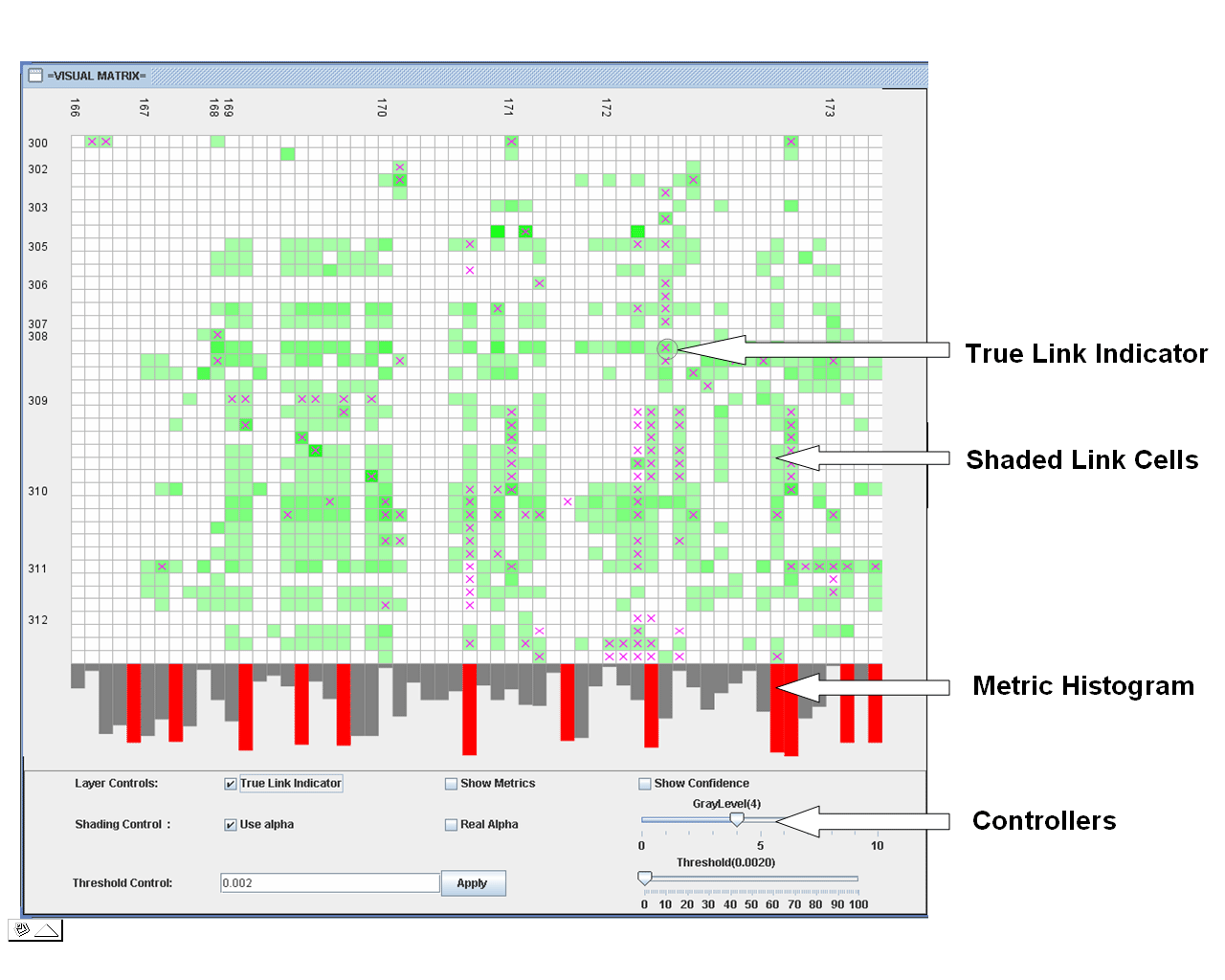
Left visualization by: Sascha
Konrad, Heather Goldsby, Karli Lopez and Betty H.C. Cheng (Michigan State University),
from “Visualizing Requirements in UML Models” in Proceedings of
REV’06 (with kind permission); right visualization by: Chuan Duan and
Jane Cleland-Huang (DePaul University), from “Visualization and Analysis
In Automated Trace Retrieval” in Proceedings of REV’06 (with kind
permission).
Goals
The workshop aims to provide a collaborative session in which
ideas related to the visualization of requirements and ways of making them practical
are shared, reviewed and debated. The controversy surrounding the practicality
of non-traditional requirements engineering techniques will be discussed. The
workshop will be used to identify future work, issues, problems and priorities,
and to propose recommendations around these dimensions for requirements engineering
visualization research.
Targeted Attendees
- RE researchers working in the development of RE tools,
techniques and methods
- RE researchers and practitioners investigating the
deployment of products of RE research in industry
- RE practitioners with experience in the selection of
RE tools, techniques and methods for specific projects
Workshop Format and Duration
The format of REV’07 will provide attendees with
an opportunity to become familiar with a new topic and establish a good foundation
for discussions about visualization in requirements engineering. We intend to
make the workshop discussion and interaction oriented. Paper presentations will
be used to provoke dialogue and participants will break out into small groups
for more detailed discussion. These small groups will be organized around common
themes or goals identified either from the papers, or by the participants during
the workshop. At the end of the day, there will be a plenary session where the
groups report back to the workshop as a whole on the results of their discussion
and future work. Results may be used as a basis for continued publications.
Duration: 1 day (6 hours)
Date: Monday October 15th, 2007
Submission Types
Position papers (3-5 pages) Short papers
state the position of the author(s) on any of the topics within the scope of
the workshop. For example, position papers could describe initial experience
with a particular visualization technique, propose an area of requirements engineering
that could benefit from more innovative forms of visualization or illustrate
how visualization techniques from other domains may be applicable to requirements
engineering problems. Position papers will be evaluated based on their potential
for generating discussion, and on the originality of the positions expressed.
Full papers (8-10 pages) Full papers describe
and report on the evaluation of visualization techniques in support of requirements
engineering activities. For example, a full paper could describe how a comparative
evaluation of visualization techniques was performed in practice, either by
controlled experimentation in the lab or in an industrial setting; or it may
present the results of the actual performance of tools, methods or processes
that embed visualization components, in lab-based experiments or field trials.
Survey papers that review and critique the range of and/or use of visualization
techniques applicable to requirements engineering are also invited. Full papers
will be evaluated based on the originality and significance of the contribution,
soundness of the validation process or quality of the survey procedure, and
on the broader applicability of the results.
Wider potential for dissemination RE07
is unusual in that it is soliciting interactive posters that are augmented with
examples of the use of rich media in requirements engineering, including requirements
visualizations, multimedia requirements documents, scenarios, storyboards and
vision/concept materials. The authors of all papers accepted to this visualization
workshop will be encouraged to prepare a mini-poster to present any tangible
requirements engineering visualizations resulting from their work to the wider
community of the main RE07 conference. (See Posters,
Demos and Exhibits CFP.)
Important Dates
-
August 6, 2007: Deadline for workshop submission
-
September 7, 2007: Notification to authors
- September 24, 2007: Camera-ready papers due
All deadlines are 23:59 Apia, Samoa time. Please send a
PDF submission conforming to IEEE CS proceedings format to Olly Gotel (ogotel@pace.edu).
You can access the IEEE templates here.
Program Committee
Ian Alexander, Scenario Plus Ltd, UK
Daniel Berry, University of Waterloo, Canada
Manfred Broy, Technische Universität München, Germany
Bernd Brügge, Technische Universität München, Germany
Betty Cheng, Michigan State University, USA
Krzysztof Czarnecki, University of Waterloo, Canada
Nancy Day, University of Waterloo, Canada
Holger Giese, University of Paderborn, Germany
Jane Hayes, University of Kentucky, USA
Frank Marchese, Pace University, USA
Stephen Morris, City University London, UK
Harold Ossher, IBM, USA
Daniela Rosca, Monmouth University, USA
Raghvinder Sangwan, Pennsylvania State University, USA
Eric Yu, University of Toronto, Canada
Workshop Co-Chairs
Brian Berenbach
Requirements Engineering Program Manager
Siemens Corporate Research
755 College Rd. East
Princeton, NJ 08540-6632
Tel: (609) 734-3395
Fax: (609) 734-6565
Email: brian.berenbach@siemens.com
Website: http://www.scr.siemens.com/en/pages/RequirementsEngineering@scr.siemens.com.htm
Brian Berenbach is the manager of the requirements engineering
competency center at Siemens Corporate Research, Inc., operated for Siemens
AG, a global company with earnings in excess of $90 Billion. Mr. Berenbach's
responsibilities include training Siemens employees and conducting research
and process improvement in all aspects of requirements engineering. In addition
to his work for Siemens, he has given courses in requirements analysis for the
Army, and has conducted professional development seminars for the IEEE. His
research interests include formal methods and visualization techniques in requirements
engineering. Mr. Berenbach holds graduate degrees from both Emory University
and the USAF Institute of Technology. Mr. Berenbach was an invited speaker at
RE'06.
Olly Gotel
Assistant Professor
Department of Computer Science
Pace University
New York, NY 10038
Tel: (212) 346-11014
Fax: (212) 346-11863
Email: ogotel@pace.edu
Website: http://csis.pace.edu/~ogotel/
Olly Gotel is an Assistant Professor of Computer Science
at Pace University in New York City. Olly has been active in the area of Requirements
Engineering for over 15 years and holds a PhD from Imperial College, University
of London, on Requirements Traceability. Olly was the co-author of the most
influential paper over a 10-year period from the 1st International Conference
in Requirements Engineering held in 1994 and a keynote speaker at the 2007 International
Symposium on Grand Challenges in Traceability. Olly helps to run the New York
City Software Process Improvement Professional Network and is a member of the
organizing committee for RE'07 (Posters, Demos and Exhibits).
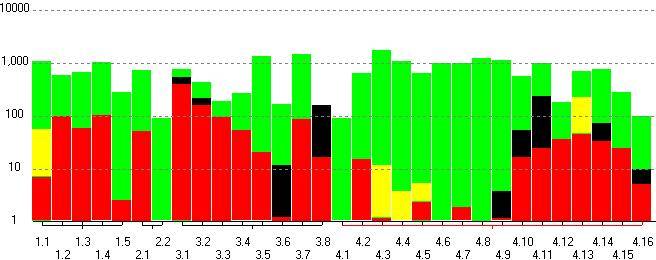
Visualization by: Martin S. Feather (California
Institute of Technology), Steven L. Cornford (California Institute of Technology),
James D. Kiper (Miami University) and Tim Menzies (West Virginia University),
from “Experiences using Visualization Techniques to Present Requirements,
Risks to Them and Options for Risk Mitigation” in Proceedings of REV’06
(with kind permission).
Back to Top







